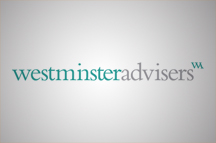 Delivering an economy that is resilient in the face of Brexit and driving largescale investment into infrastructure were the two key themes of Philip Hammond’s first set-piece announcement.
Delivering an economy that is resilient in the face of Brexit and driving largescale investment into infrastructure were the two key themes of Philip Hammond’s first set-piece announcement.
Hammond spoke of an economy that had ‘confounded’ expectations in the months since the EU referendum. However, in a sober and measured performance, the Chancellor highlighted how the impact of the decision to leave the EU will require the UK to urgently address the weaknesses in the economy. It was made clear that the productivity gap, the housing shortage and regional disparities are all in the government’s sights.
As had been previously highlighted, whilst the government will continue to commit to fiscal discipline the ambition for a budget surplus has been shelved. Instead, fiscal headroom will be built in to deal with potential uncertainty and shocks that could be caused during the Brexit process.
Linking improving productivity to supporting the lives of the ‘just about managing’ classes, the Chancellor unveiled a largescale programme of investment in key infrastructure sectors. A National Productivity Investment fund totalling £23bn up to 2021-22, targeted at high-value investments across housing, transport and digital infrastructure, was one of the key announcements.
As has become traditional, Hammond saved his ‘surprise’ for the end of the statement, stating that his first Autumn Statement would also be his last. Reflecting the new administration’s preference for fewer announcements and a more stable policy environment, the government will move towards a single annual Budget held in the autumn, with a spring statement – where the Chancellor will simply respond to the OBR’s forecasts – being introduced.
The full statement is available here.
The economic and fiscal outlook
The Office for Budget Responsibility (OBR) upgraded its growth forecast to 2.1% in 2016. The UK is forecast to be the fastest growing country in the G7 in 2016.
- The Chancellor reported that the UK is likely to face a period of uncertainty, followed by adjustment.
- The OBR forecasts that GDP growth will slow to 1.4% in 2017, and then recover to 1.7% in 2018, 2.1% in both 2019 and 2020, and 2.0% in 2021.
- The Government is no longer seeking a budget surplus in 2019-20. The Chancellor outlined plans to returning the public finances to balance as soon as possible in the next Parliament, with an interim objective of reducing the structural deficit to less than 2% of GDP, and for debt as a percentage of GDP to be falling by the end of this Parliament.
- Debt will rise from 84.2% of GDP last year to 87.3% this year, peaking at 90.2% in 2017-18.
- The OBR forecasts CPI inflation of 2.3% in 2017, 2.5% in 2018, 2.1% in 2019 and 2.0% in 2020 and 2021.
Headline announcements
Abolition of Autumn Statement
The government’s intention is to abolish the Autumn Statement and move to a single fiscal event in the autumn each year.
Corporation tax
The government recommits to the business tax road map which sets out plans for major business taxes to 2020 and beyond, including cutting the rate of corporation tax to 17% by 2020 and reducing the burden of business rates by £6.7 billion over the next 5 years.
Employment
.jpg) The National Living Wage and the National Minimum Wage will increase from April 2017.
The National Living Wage and the National Minimum Wage will increase from April 2017.
The National Living Wage for those aged 25 and over will increase from £7.20 per hour to £7.50 per hour.
The National Minimum Wage will also increase:
- for 21 to 24 year olds – from £6.95 per hour to £7.05
- for 18 to 20 year olds – from £5.55 per hour to £5.60
- for 16 to 17 year olds – from £4.00 per hour to £4.05
- for apprentices – from £3.40 per hour to £3.50
Fuel duty
Will remain frozen for a seventh successive year saving the average motorist £130 / year.
Personal Allowance
A commitment to raise the personal allowance to £12,500 and the higher rate threshold to £50,000 by 2020-21.
The personal allowance sits at £11,000 this year, and will rise to £11,500 in 2017-18. The point at which you pay the higher rate of income tax will increase from £43,000 this year, to £45,000 in 2017-18.
Once the Personal Allowance reaches £12,500, it will increase in line with inflation.
Welfare changes and Universal Credit
There will be no further welfare savings measures introduced before 2020.
The Universal Credit taper will be reduced from 65% to 63% from April 2017. The taper calculates a reduction in benefits as a person’s salary increases.
For every £1 earned after tax above an income threshold, a person receiving Universal Credit has their benefit award reduced by 65p and keeps 35p. They will now keep 37p for every £1, from April 2017.
Letting agent fees
Letting agents will be banned from charging renters fees, for example when they sign a new tenancy agreement. The government plans to consult on this in due course.
Pension scams
A consultation before Christmas will look at ways to tackle pensions scams, including banning businesses from cold calling someone about their pension. This includes scammers targeting people who inadvertently ‘opt-in’ to receiving third party communications.
Libor fines
Over £102 million of LIBOR banking fines to support armed forces and emergency services charities.
£102 million will go to more than 100 projects supporting armed forces personnel, their families and veterans; emergency service personnel; children’s hospitals, air ambulances and emergency responders; and museums and memorials, over the next 4 years.












